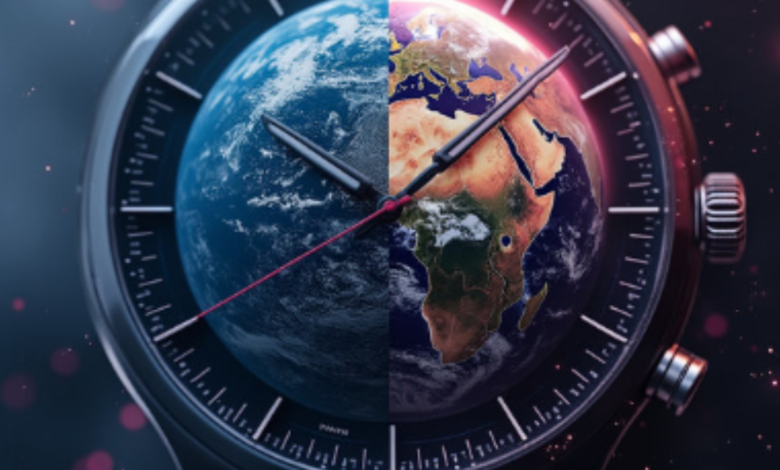Future of Discovery: Watch Google AI Research Tool Conjure Hypotheses Like Magic!

Prepare to be amazed! The landscape of scientific discovery is undergoing a seismic shift, and at the epicenter of this revolution is a groundbreaking innovation from Google: a revolutionary AI research tool designed to generate hypotheses. Imagine a world where complex research questions are met with a cascade of insightful, novel hypotheses, all generated in the blink of an eye. THis isn’t science fiction; it’s the reality Google has unveiled. This new tool, a testament to the incredible power of artificial intelligence, promises to accelerate research, unlock hidden patterns, and redefine the very nature of scientific inquiry. We’re not just talking about incremental improvements; we’re talking about a quantum leap, a paradigm shift that will empower researchers to explore uncharted territories and push the boundaries of human knowledge. This is more than just a tool; its a catalyst for innovation, a beacon guiding us towards a future where discovery is faster, more efficient, and more profound. Get ready to witness the dawn of a new era, where the seemingly impossible becomes reality, and where the Google AI research tool conjures hypotheses like magic!
Witness the Spark: How Google AI Research Tool Ignites New Scientific Avenues
The initial moment of inspiration, the “aha” moment, is often the most challenging yet crucial aspect of scientific research. it’s the spark that ignites a chain reaction of investigation, experimentation, and ultimately, discovery. Traditionally, this spark has relied heavily on human intuition, creativity, and years of accumulated knowledge. However, the Google AI research tool is poised to revolutionize this process, acting as a powerful catalyst for new scientific avenues. By analyzing vast datasets, identifying hidden correlations, and synthesizing information from diverse sources, this tool can generate novel hypotheses that might otherwise remain undiscovered. It’s like having a brilliant research partner who never sleeps, constantly exploring new possibilities and offering fresh perspectives. Imagine a researcher grappling with a complex problem in genomics. The Google AI research tool can sift through massive genomic databases, identify potential gene interactions, and propose hypotheses about their functional significance. This not only saves valuable time but also opens up new avenues of research that might have been overlooked. The tool’s ability to process and synthesize information at an unprecedented scale allows it to identify subtle patterns and connections that are are beyond the reach of human cognition. This ability to spot connections that humans might miss is one of the most exciting functions of the tool. It can help bridge disparate fields of study, connecting seemingly unrelated areas and fostering interdisciplinary research. FOr example, it could link data from climate science with data from epidemiology, revealing unexpected relationships between environmental changes and disease patterns. The implications are staggering, potentially leading to breakthroughs in fields ranging from medicine and materials science to environmental sustainability and astrophysics. The Google AI research tool is not just a tool; it’s a partner in discovery, empowering researchers to explore the unknown with renewed vigor and confidence.
Hypothesis Generation: The “Magic” Behind Google AI Research Tool’s Creative Output
The heart of the Google AI research tool lies in it’s ability to generate hypotheses, a process that has traditionally been the domain of human creativity and intuition. But how does it achieve this seemingly magical feat? THe answer lies in the sophisticated algorithms and machine learning models that power the tool. It’s designed to analyze vast datasets, identify patterns, and generate novel hypotheses based on the information it processes. It doesn’t just regurgitate existing knowledge; it synthesizes information in new and innovative ways, creating hypotheses that are both relevant and original. The tool leverages advanced natural language processing (NLP) to understand and interpret scientific literature, extracting key concepts and relationships. It then uses machine learning algorithms to identify patterns and generate hypotheses that are consistent with the available data. The “magic” lies in its ability to go beyond simple pattern recognition and to generate truly creative hypotheses. It’s not just about finding correlations; it’s about understanding the underlying mechanisms and proposing explanations that are both plausible and testable. Think of it as a supercharged brainstorming session, where the Google AI research tool acts as the ultimate collaborator, offering a constant stream of fresh ideas and insights. The tool’s ability to generate multiple hypotheses allows researchers to explore a a wider range of possibilities, increasing the chances of finding a breakthrough. Furthermore, the tool can provide explanations and justifications for its hypotheses, helping researchers to understand teh reasoning behind its suggestions. This transparency is crucial for building trust in the tool and for ensuring that its output is scientifically sound. The Google AI research tool is not intended to replace human researchers; rather, it’s designed to augment there capabilities, providing them with a powerful tool for generating and exploring new ideas.
Speeding Up Innovation: The Impact of Google AI Research Tool on Research Timelines
In the fast-paced world of scientific research, time is of the essence. THe traditional process of generating and testing hypotheses can be time-consuming, often taking months or even years too complete. The Google AI research tool promises to dramatically accelerate this process, allowing researchers to generate hypotheses in a fraction of the time. By automating the hypothesis generation process, the tool frees up researchers to focus on other critical aspects of their work, such as experimental design, data analysis, and interpretation. This not only increases efficiency but also allows researchers to explore a wider range of research questions. Imagine a researcher working on a time-sensitive project, such as developing a new treatment for a rapidly spreading disease. The Google AI research tool can quickly generate a range of hypotheses about potential drug targets targets and treatment strategies, allowing researchers to prioritize there efforts and accelerate the development of new therapies. This speed is critical when addressing urgent global challenges. The ability to quickly generate and test hypotheses can also lead to faster breakthroughs in other fields, such as materials science, where the development of new materials can take years of trial and error. The Google AI research tool can analyze vast databases of material properties and generate hypotheses about potential new materials with desired characteristics, significantly reducing the time required for discovery. Furthermore, the tool can help researchers to identify promising areas of research that might otherwise be overlooked, leading to faster progress in emerging fields. The Google AI research tool is not just about saving time; its about maximizing the impact of research, allowing scientists to make discoveries faster and address pressing global challenges more effectively.
Beyond Traditional Methods: Google AI Research Tool Redefines Discovery
Scientific discovery has traditionally relied on a combination of observation, experimentation, and intuition. However, the Google AI research tool is poised to redefine this process, offering a new paradigm for discovery. By leveraging the power of artificial intelligence, the tool can identify patterns and generate hypotheses that are beyond the reach of traditional methods. It can analyze vast datasets, identify hidden correlations, and synthesize information form diverse sources, leading to discoveries that would otherwise remain hidden. One of the key advantages of the tool is its ability to process and analyze data at an unprecedented scale. This allows it to identify subtle patterns and connections that are beyond the reach of human cognition. It can also help researchers to overcome cognitive biases, which can sometimes limit the scope of their investigations. The Google AI research tool can also help researchers to explore new areas of research that are to complex or data-intensive for traditional methods. For example, it can be used to analyze complex biological systems, such as the human brain, or to model complex complex environmental processes, such as climate change. Furthermore, the tool can facilitate interdisciplinary research by connecting researchers from different fields and allowing them to share data and insights. This can lead to new collaborations and breakthroughs that would not have been possible otherwise. The Google AI research tool is not just a tool; its a catalyst for change, transforming the way we approach scientific discovery and opening up new frontiers of knowledge.
Unlocking Unseen Connections: The Future of Research with Google AI Research Tool
The future of research is bright, and the Google AI research tool is poised to play a central role in shaping that future. By empowering researchers to generate hypotheses faster, explore new avenues of research, and unlock hidden connections, this tool has the potential to revolutionize scientific discovery. Imagine a world where researchers have access to a powerful AI assistant that can help them to generate and test hypotheses, explore new areas of research, and collaborate with colleagues from around the world. This is the vision that the Google AI research tool is helping to realize. The tool’s ability to analyze vast datasets and identify hidden patterns can lead to breakthroughs in fields ranging from medicine and materials science to environmental sustainability and astrophysics. It can also help to adress pressing global challenges, such as climate change, disease outbreaks, and food security. The Google AI research tool is not just about generating hypotheses; its about fostering a culture of innovation and collaboration. By providing researchers with a powerful tool for exploration, it can help to accelerate the pace of scientific discovery and lead to a brighter future for all. The tool will continue to improve and evolve as AI technology advances, becoming even more powerful and versatile. THe future of research is exciting, and the Google AI research tool is leading the way.
The Conclusion:
The Google AI research tool is more than just a technological marvel; it’s a beacon of hope, illuminating the path towards a future where scientific discovery is faster, more efficient, and more profound. This tool is a testament to the incredible power of artificial intelligence and its potential to transform our world. AS we continue to explore the vast unknown, this tool will be our guide, our partner, and our catalyst for innovation. The future of discovery is here, and it’s more exciting than we ever imagined.

